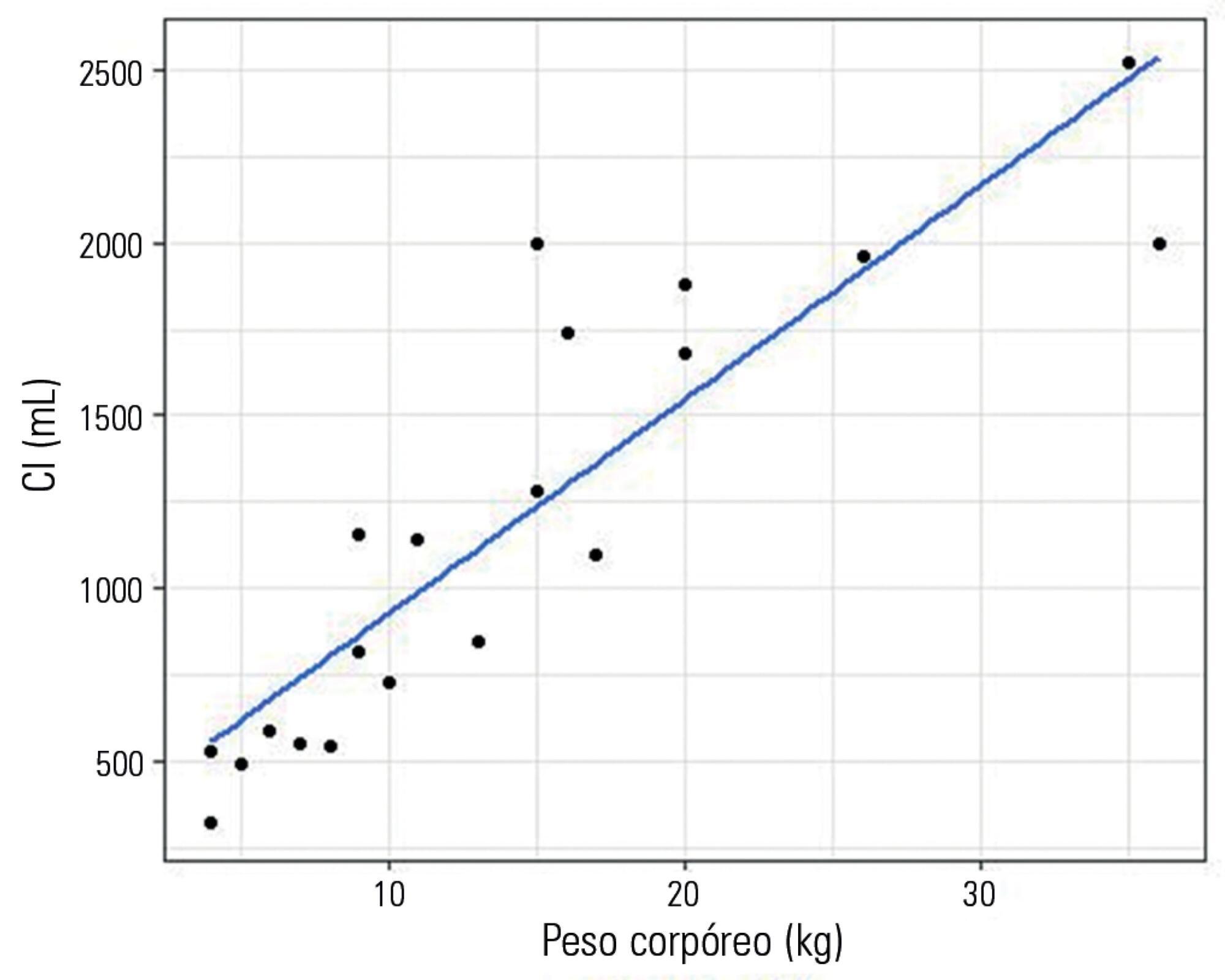You searched for:"Emiliano Gogniat"
We found (3) results for your search.-
Original Article
Impact of liberal versus conservative saturation targets on gas exchange indices in COVID-19 related acute respiratory distress syndrome: a physiological study
Rev Bras Ter Intensiva. 2021;33(4):537-543
Abstract
Original ArticleImpact of liberal versus conservative saturation targets on gas exchange indices in COVID-19 related acute respiratory distress syndrome: a physiological study
Rev Bras Ter Intensiva. 2021;33(4):537-543
DOI 10.5935/0103-507X.20210081
Views0ABSTRACT
Objective:
To compare gas exchange indices behavior by using liberal versus conservative oxygenation targets in patients with moderate to severe acute respiratory distress syndrome secondary to COVID-19 under invasive mechanical ventilation. We also assessed the influence of high FiO2 on respiratory system mechanics.
Methods:
We prospectively included consecutive patients aged over 18 years old with a diagnosis of COVID-19 and moderate-severe acute respiratory distress syndrome. For each patient, we randomly applied two FiO2 protocols to achieve SpO2 88% – 92% or 96%. We assessed oxygenation indices and respiratory system mechanics.
Results:
We enrolled 15 patients. All the oxygenation indices were significantly affected by the FiO2 strategy (p < 0.05) selected. The PaO2/FiO2 deteriorated, PA-aO2 increased and Pa/AO2 decreased significantly when using FiO2 to achieve SpO2 96%. Conversely, the functional shunt fraction was reduced. Respiratory mechanics were not affected by the FiO2 strategy.
Conclusion:
A strategy aimed at liberal oxygenation targets significantly deteriorated gas exchange indices, except for functional shunt, in COVID-19-related acute respiratory distress syndrome. The respiratory system mechanics were not altered by the FiO2 strategy.
Keywords:artificialCOVID-19OxygenationPulmonary gas exchangeRespirationRespiratory distress syndromeRespiratory mechanicsSee more
-
Original Articles
Sizing the lung in dogs: the inspiratory capacity defines the tidal volume
Rev Bras Ter Intensiva. 2018;30(2):144-152
Abstract
Original ArticlesSizing the lung in dogs: the inspiratory capacity defines the tidal volume
Rev Bras Ter Intensiva. 2018;30(2):144-152
DOI 10.5935/0103-507X.20180028
Views0See moreABSTRACT
Objective:
To evaluate a novel physiological approach for setting the tidal volume in mechanical ventilation according to inspiratory capacity, and to determine if it results in an appropriate mechanical and gas exchange measurements in healthy and critically ill dogs.
Methods:
Twenty healthy animals were included in the study to assess the tidal volume expressed as a percentage of inspiratory capacity. For inspiratory capacity measurement, the mechanical ventilator was set as follows: pressure control mode with 35cmH2O of inspired pressure and zero end-expiratory pressure for 5 seconds. Subsequently, the animals were randomized into four groups and ventilated with a tidal volume corresponding to the different percentages of inspiratory capacity. Subsequently, ten critically ill dogs were studied.
Results:
Healthy dogs ventilated with a tidal volume of 17% of the inspiratory capacity showed normal respiratory mechanics and presented expected PaCO2 values more frequently than the other groups. The respiratory system and transpulmonary driving pressure were significantly higher among the critically ill dogs but below 15 cmH2O in all cases.
Conclusions:
The tidal volume based on the inspiratory capacity of each animal has proven to be a useful and simple tool when setting ventilator parameters. A similar approach should also be evaluated in other species, including human beings, if we consider the potential limitations of tidal volume titration based on the calculated ideal body weight.

-
Original Articles
Implementation and results of a new ECMO program for lung transplantation and acute respiratory distress
Rev Bras Ter Intensiva. 2015;27(2):134-140
Abstract
Original ArticlesImplementation and results of a new ECMO program for lung transplantation and acute respiratory distress
Rev Bras Ter Intensiva. 2015;27(2):134-140
DOI 10.5935/0103-507X.20150024
Views0ABSTRACT
Objective:
The development of the extracorporeal membrane oxygenation in Latin America represents a challenge in this specialty field. The objective of this article was to describe the results of a new extracorporeal membrane oxygenation program in an intensive care unit.
Methods:
This retrospective cohort study included 22 patients who required extracorporeal membrane oxygenation and were treated from January 2011 to June 2014. The baseline characteristics, indications, duration of the condition, days on mechanical ventilation, days in the intensive care unit, complications, and hospital mortality were evaluated.
Results:
Fifteen patients required extracorporeal membrane oxygenation after lung transplantation, and seven patients required oxygenation due to acute respiratory distress. All transplanted patients were weaned from extracorporeal membrane oxygenation with a median duration of 3 days (Interquartile range – IQR: 2 – 5), were on mechanical ventilation for a median of 15.5 days (IQR: 3 – 25), and had an intensive care unit stay of 31.5 days (IQR: 19 – 53) and a median hospital stay of 60 days (IQR: 36 – 89) with 20% mortality. Patients with acute respiratory distress had a median oxygenation membrane duration of 9 days (IQR: 3 – 14), median mechanical ventilation time of 25 days (IQR: 13 – 37), a 31 day stay in therapy (IQR: 11 – 38), a 32 day stay in the hospital (IQR: 11 – 41), and 57% mortality. The main complications were infections (80%), acute kidney failure (43%), bleeding at the surgical site and at the site of cannula placement (22%), plateletopenia (60%), and coagulopathy (30%).
Conclusion:
In spite of the steep learning curve, we considered this experience to be satisfactory, with results and complications comparable to those reported in the literature.
Keywords:acute respiratory distress syndromeExtracorporeal membrane oxygenationIntensive care unitsLung transplantationPrimary graft dysfunctionRespiratory insufficiencySee more
Search
Search in:
KEY WORDS
Case reports Child Coronavirus infections COVID-19 Critical care Critical illness Extracorporeal membrane oxygenation Infant, newborn Intensive care Intensive care units Intensive care units, pediatric mechanical ventilation Mortality Physical therapy modalities Prognosis Respiration, artificial Respiratory insufficiency risk factors SARS-CoV-2 Sepsis




